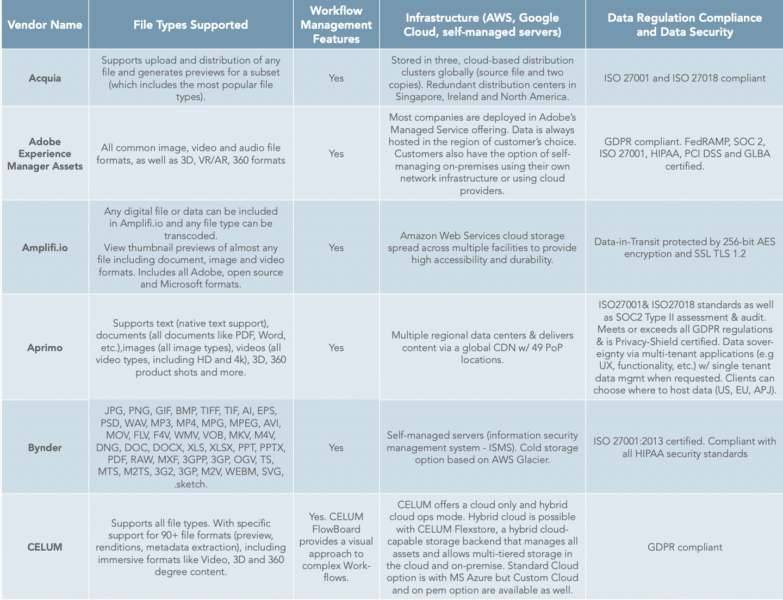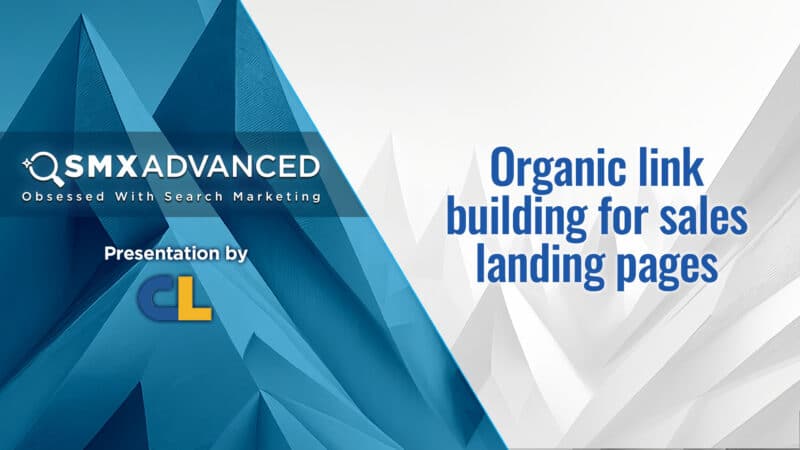DAMs are software programs that store, organize and enable the more efficient use of an organization’s entire library of digital assets. A DAM is the “single source of truth” where marketers can find every relevant version of the media assets — images, PDFs, photographs, audio, video and even virtual reality or other cutting-edge formats.
A DAM appends these assets with metadata that provide information on anything a marketer might want to know before using the asset, such as:
- Does the company own the perpetual rights to use a photograph and in what markets?
- Has the legal team approved the latest version of a video?
- Has an infographic or whitepaper been checked to ensure it complies with the brand’s design standards?
How do companies use DAM?
Enterprises use DAMs in a variety of ways. Marketing agencies leverage DAM technology to help clients maintain consistency across content and assets produced in-house and by partners.
B2B businesses might use DAMs differently, drawing on the benefits of a centralized hub for sales collateral and event marketing materials. DAMs are also integrated with other
technologies, especially content management systems (CMSs) and digital experience platforms (DXPs), to unify asset management with the ability to distribute content directly to the channels where they’re consumed.
Before the blossoming of software-as-a-service (SaaS), DAMs were installed software that resided on a company’s servers. But their utility has grown exponentially – especially for global and distributed organizations – now that most DAMs are cloud-based offerings.
Why are so many organizations using DAMs?
Consumer expectations
Buyers expect digital experiences to be tailored to their individual preferences and needs. Sixty-five percent of customers expect companies to understand them well enough to adapt to their changing needs and preferences, according to The State of the Connected Customer report by Salesforce. A majority expect personalization to improve when technology advances, when they provide more data and when they spend more.
The expanding number of channels and devices consumers are using
DAMs make it easier to create and repurpose marketing content according to the different needs of the medium and format. They also support the entire content lifecycle – from upstream creative to downstream delivery. They support work-in-progress for content, speeding asset workflows, reviews and approvals, as well as connecting with tools like Adobe Creative Cloud, Canva and Microsoft Office.
Artificial intelligence
Another factor driving the adoption of DAMs is the growing accessibility of artificial intelligence (AI) and machine learning (ML). Though DAMs offer a great deal of utility, the manual nature of categorizing assets – adding descriptions, tags, etc. to enable users to find the assets later as needed – has been a big hurdle to the successful employment of this technology.
API-accessible AI content recognition systems enabling users to automatically analyze and append information to assets (known as metadata) without the huge investment of employee time that was once required.
DAMs also use AI to power advanced search functionality, including image recognition and predictive search. These capabilities are expected to grow more useful as AI is employed to better understand the intent and context of user queries.
Additionally, workflow automation functionality within DAMs is often streamlined with AI. The technology accelerates the review and approval processes by making them more efficient.
Dig deeper: How to protect and leverage your single source of truth
This guide is for marketers looking to enhance their campaigns with digital assessment management technologies. Here’s what’s inside:
Dig Deeper: 4 steps to faster DAM search: Creating a file naming convention
Capabilities of digital asset management platforms
Digital asset management platforms have everything from legacy features, like file management, to emerging capabilities due to the advent of artificial intelligence and machine learning.
Here is a detailed look.
Workflow management
DAM systems differ in the extent of their workflow management capabilities. Some allow collaboration through @ tagging, while others have more full-fledged project management offerings. This can help marketing teams, along with outside creative resources, communicate about changes while an asset is in development or being updated.
Later, they can allow for approvals to be obtained from brand managers, execs and the legal team, while some systems also facilitate asset distribution. These capabilities may be built into the core platform or offered as an add-on or integration. Most DAMs are SaaS and can be accessed from browsers, but some have developed native apps.
File formats and handling
One area of differentiation is the ability to manage a variety of file formats. Most support common popular video, image and audio formats. However, if your workflow requires a specialized format you will need to ensure any system you’re considering can handle it.
Asset conversion, editing and customization
Some platforms allow an asset uploaded in one format to be downloaded or distributed in another — with conversions happening on the fly. Also, some have lightweight editing capabilities within the platform. To be clear, connections with common image editing software (Adobe Photoshop, Adobe Illustrator, etc.) are typically more useful.
Distribution and user permissions management
The content production supply chain can involve many departments, agencies, freelancers and more. The ability to provide flexible permissions, so the right people have access to the right assets –– and only the right assets –– is very valuable.

Explore DAM solutions from vendors like Acquia, Widen, Cloudinary, MediaValet and more in the full MarTech Intelligence Report on digital asset management platforms.
Within agencies, in particular, these capabilities can give clients/customers convenient self-service capabilities. It also lets large enterprises maintain a consistent brand message across geographies and verticals, while still letting marketers and salespeople can help themselves to the materials they need.
Search and metadata
One of the most important benefits of a DAM is the ability to find assets after they’ve been created and filed away. Most providers now use artificial intelligence, either proprietary or through a partnership, for image and video recognition and tagging. Vendors are also exploring ways to use AI and machine learning to find insights and automate content transformations based on usage patterns.
Digital rights and corporate governance management
Most marketers license content from individual creators or stock libraries. DAMs can keep track of the specific license terms governing each piece of content, ensuring they’re not used in the wrong market, an unapproved context or after license expiration.
Corporate brand guidelines, as well as timelines associated with particular marketing campaigns, can also typically be managed with DAM functionality.
Reports and analytics
Analytics capabilities allow marketers to trace the return on the investment made in the development of digital media. They can also determine which assets are used most often and in what ways, proividing insights for planning future content creation.
Data storage and security
The majority of DAM providers partner with Amazon Web Services or Google to host their software and their clients’ assets. This means following those companies’ policies for geographical distribution, backups and security protocols. However, some players offer clients a variety of options for data hosting. This is useful for enterprises working with strict data governance regulations.
Integrations
Since a DAM is meant to be the central “single source of truth” repository for all of a brand’s assets, it must integrate well with the rest of your martech stack. Vendors differ greatly in terms of the number and types of integrations they offer. Some are beginning to specialize in serving a specific sector with unique integration needs, such as online retailers using product information management systems.
What are the benefits of using a digital asset management system?
Digital asset management systems can play a vital role in your marketing organization, unifying online and offline marketing channels and leading to more efficient marketing resource allocation.
The specific benefits of using a digital asset management platform include – but are not limited to – the following:
- Improved communication between in-house and freelance/contract workers.
- Improved distribution of assets to clients, partners or other outsiders.
- More efficient utilization of existing resources.
- Increased efficiency in the workflow for internal approvals.
- Speed the conversion of assets into different sizes, aspect ratios and file types.
- More efficient creation and distribution of assets to martech and adtech systems.
- Easier compliance with changing brand standards and licensing terms.
- Ease of presenting a more consistent brand face to the customer.
- Ability to quantify the usage of each digital asset, and therefore track ROI on the cost of creation and distribution.
Email:
See terms.
The post What is digital asset management and how can it help you? appeared first on MarTech.




